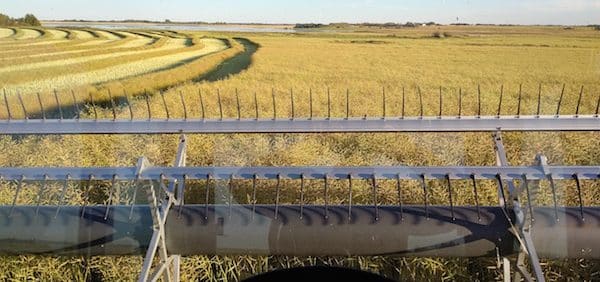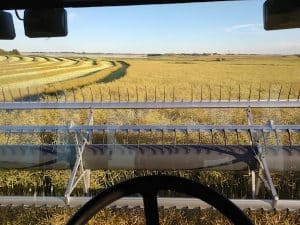Optimal swath timing for canola yield and quality is when at least 60% of seeds on the main stem are showing some colour change. Seed colour change (SCC) is considered any amount of yellow or brown on the seed. (Read here for more tips.) This increases crop yield because side branches have longer to fill and average seed size for the whole plant is larger.
Should growers adjust this approach in situations that make the decision more difficult? The following many help with those decisions:
Hail. Hail can cause plants to put out new branches, creating a mix of mature pods ready to shell out and brand new pods just starting to fill. The key is to decide where most of the yield will come from and cut based on seed colour change for those branches — with a consideration for calendar date and frost risk. A pre-harvest herbicide could help with straight combining if the highest-yielding parts of the crop are ready to go. In that situation, the pre-harvest will dry down the green parts for easier harvest. If the highest yielding parts of the plant are the latest parts, spraying now will sacrifice all that yield. Read more.
Lodging. Swathing has no clear advantage over straight combining for lodged canola. It often comes down to personal preference. Read more.
Disease. Swath timing should always be based on the stage of plants that will contribute the most to yield. Plants senescing early due to disease will not likely produce many viable seeds, so a decision to swath early because of these dying plants can actually make the situation worse. It cuts yield potential for healthy plants. And because spread of disease can happen in the swath, cutting later reduces this risk. Read more.
Uneven crop. This can result from any number of factors, including low plant population, uneven emergence dates due to deep seeding or cold soils, insect damage, crop residue and hail. Decide where most of the yield will come from and cut based on seed colour change for those branches — with a consideration for calendar date and frost risk. Waiting, if possible, is usually the best choice. Read more. Read more.


